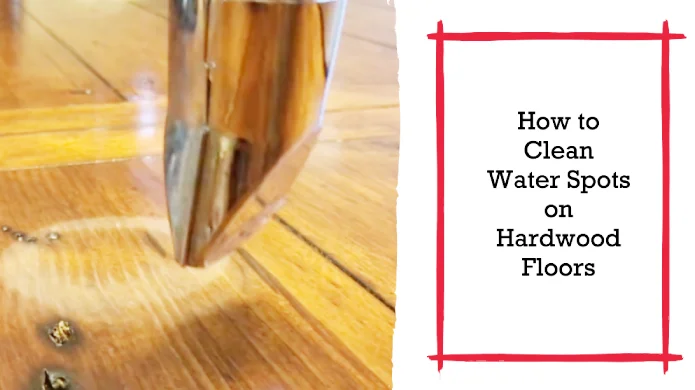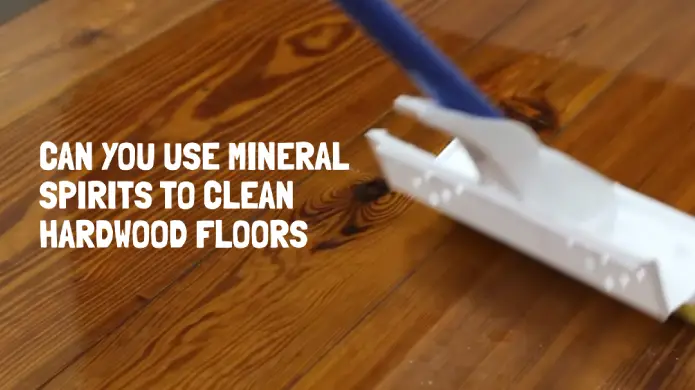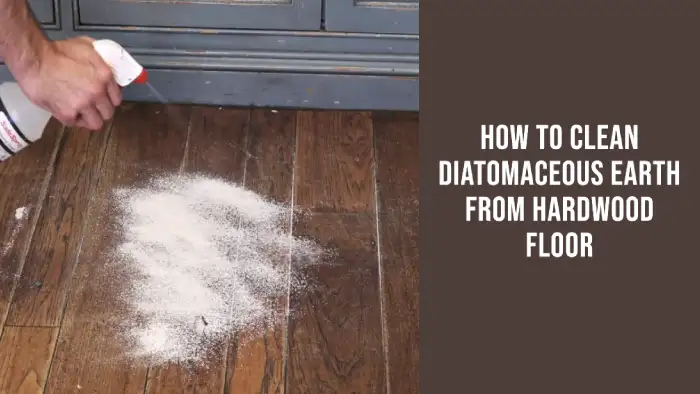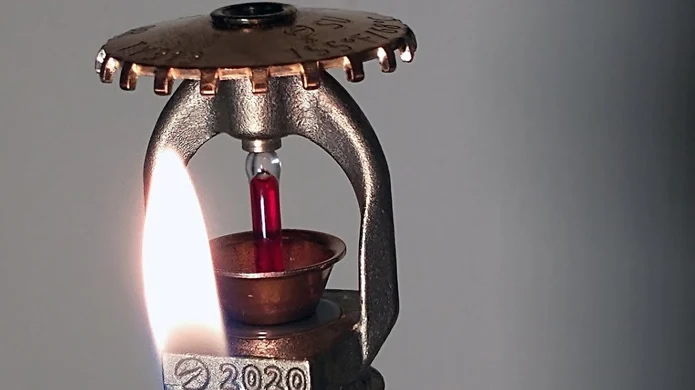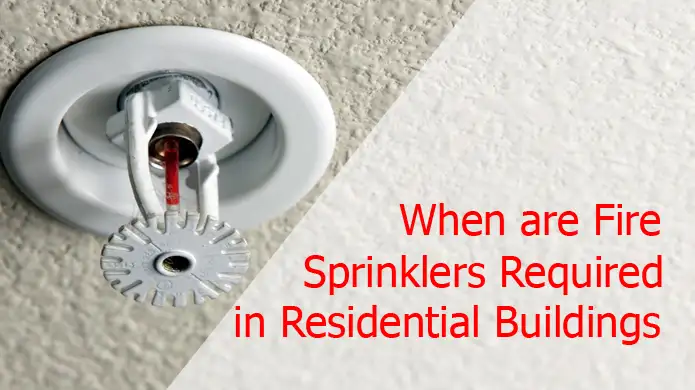How to Clean Water Spots on Hardwood Floors: 5 Effective Methods [DIY]
Water spots on hardwood floors can be annoying, but there are effective methods to try to remove them and restore your floors to their former glory.
A simple yet powerful vinegar solution works wonders in dissolving those water spots, effortlessly wiping them away.
Alternatively, concocting a baking soda paste and gently scrubbing the spots can provide impressive results if you prefer a paste-like consistency.
You can also use the invigorating properties of lemon juice, which can help break down the spots while infusing a citrusy fragrance throughout your space. Let’s look at some of the most effective methods with detailed steps.
How to Clean Water Spots on Hardwood Floors: Effective Methods You Can Try
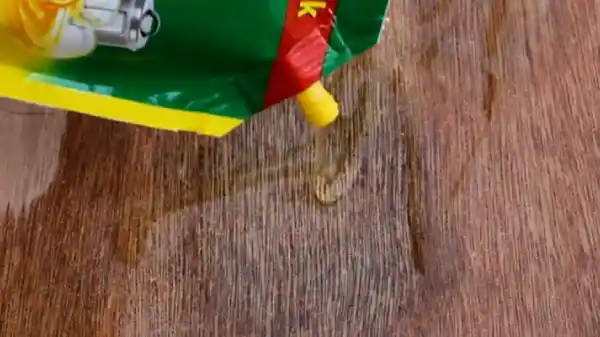
If you’re dealing with water spots on your hardwood floors, don’t fret, as you can try several effective methods. Here’s a quick rundown:
Method 1: Vinegar Solution
Method 2: Baking Soda Paste
Method 3: Lemon Juice
Method 4: Mineral Spirits
Method 5: Commercial Hardwood Floor Cleaner
Let’s examine the method in detail.
Method 1: Vinegar Solution
If you’re wondering how to get water spots out of hardwood floors, a vinegar solution is one effective method. Follow these steps:
Step 1: Mix the Solution
To create a vinegar solution for cleaning water spots on hardwood floors, you will need to gather the necessary ingredients and follow a few simple steps.
Begin by preparing the solution in a spray bottle. Mix equal parts of distilled white vinegar and warm water in a container. For instance, if you use 1 cup of vinegar, add 1 cup of warm water. Stir the mixture gently to ensure it is well combined and the vinegar is evenly distributed in the solution.
Once you have prepared the vinegar solution, proceed to the next step of the cleaning process.
The vinegar’s acidity helps to dissolve and remove the water spots, while the water dilutes the vinegar to prevent any potential damage to the hardwood surface.
Step 2: Spray the Solution
Once you’ve mixed the solution, grab a spray bottle and saturate the water spots thoroughly. Ensure you cover every inch of the affected areas with the solution and let it sit for a few minutes.
The vinegar solution will break down the mineral deposits in the water spots, making them easier to remove. Don’t worry if the spots don’t disappear right away. The solution needs time to work its magic.
Step 3: Wipe the Spots
Using a soft cloth or microfiber mop, gently wipe away the pesky marks and lift the mineral deposits with circular motions. Apply light pressure as you work to remove the water spots, being careful not to scrub too vigorously and damage the hardwood floors.
Step 4: Rinse and Dry the Area
After wiping away the mineral deposits, you need to thoroughly rinse and dry the area to ensure a spotless and polished finish.
Grab a clean cloth and dampen it with water, then wipe the area to remove any remaining vinegar solution. Make sure to cover all spots and corners.
Once you’ve rinsed the area, dry it with a dry cloth or let it air dry completely. This is crucial to prevent any water damage or warping of the hardwood floors. Properly drying the area will also ensure that no water spots reappear.
So, take your time and don’t rush this step. Your hardwood floors will thank you for it.
Method 2: Baking Soda Paste
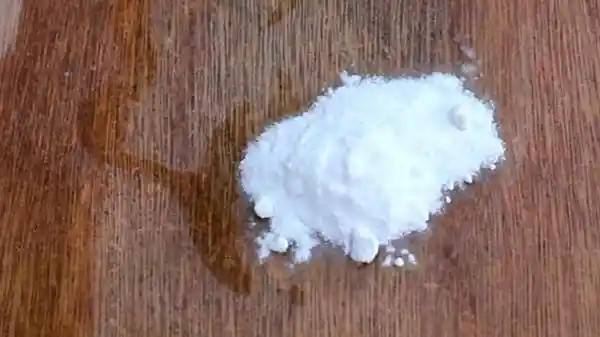
If you’re looking for another effective way to get rid of water spots on your hardwood floors, try making a baking soda paste. Here’s what you need to do:
Step 1: Make the Paste
Get ready to make a quick and easy solution that’ll make your wooden surfaces shine like new. Grab a small bowl and mix baking soda and a small amount of water until you achieve a paste-like consistency.
Make sure to stir well to ensure all of the baking soda is dissolved and evenly distributed throughout the mixture.
This paste will be the key to removing those pesky water spots that can dull the appearance of your hardwood floors.
Once you’ve got your paste ready, it’s time to move on to the next step in the process of removing water spots from your hardwood floors.
Step 2: Apply the paste
Now that you’ve made the baking soda paste, it’s time to apply it to those pesky water spots on your hardwood floor.
Grab a soft cloth or sponge and scoop a small amount of the paste. Don’t be afraid to get your hands dirty and work the paste into the spots, ensuring they are evenly covered.
The baking soda will work to lift the water stains and restore your floor’s natural beauty. Remember to be gentle and take your time, as hardwood floors are delicate and require special care.
Step 3: Rub the Spots
As you gently massage the baking soda paste into your floor, you’ll watch the scars of the past fade away, revealing the natural radiance beneath. Remember to apply light pressure and use circular motions to avoid damaging the wood.
Be patient as you rub the water spots, and continue until they start to disappear. You may need to apply more paste if the spots are particularly stubborn. Take breaks as necessary to avoid overworking your arms and hands.
Step 4: Remove the Paste
Once you’ve massaged the baking soda paste in and allowed it to work its magic, you need to thoroughly remove it with a damp cloth to reveal the lustrous shine of your beautiful wood.
Dampen a clean cloth with water and use it to wipe off the baking soda paste from the floor. Be sure to rinse the cloth frequently to prevent the paste from spreading back onto the floor.
Removing all traces of the paste is essential to avoid leaving any residue on the wood. After removing the paste, dry the area thoroughly using a dry cloth to prevent any water damage to the wood.
Method 3: Lemon Juice
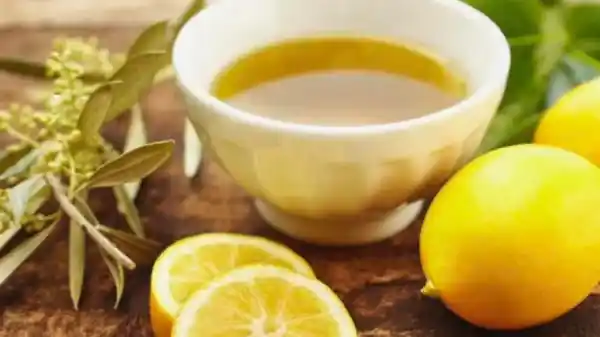
If you’re getting water spots on your hardwood floors, use lemon juice as a natural cleaning solution. Let’s get into the steps:
Step 1: Squeeze Fresh Lemon Juice
You’ll need to start by squeezing the fresh juice from a lemon half into a bowl, allowing its acidic properties to work their magic on your wooden surfaces.
Lemon juice is a natural acid that can help break down the mineral deposits that cause water spots on hardwood floors. The acid also acts as a mild bleach, helping to lighten any discoloration caused by the water spots.
Step 2: Apply the Lemon Juice
Gently massage the fresh lemon juice-soaked cloth onto the affected area. This is a wise choice to break down mineral deposits and eliminate discoloration on your beloved wooden surfaces.
The lemon juice works as a natural acid to dissolve the minerals in the water spots, making it easier to remove.
Cover the spots thoroughly with the lemon juice-soaked cloth or sponge. You can use a circular motion to apply the juice and ensure that it penetrates the wood. Keep the cloth or sponge moist with lemon juice to maintain its effectiveness.
Step 3: Let It Sit
Once you’ve applied the lemon juice, let it work its magic for a few minutes and watch as the miracle of lemon dissolves the pesky mineral deposits.
The natural acidity of lemon juice helps break down the water spots on your beautiful hardwood floors.
Step 4: Wipe and Dry the Area
Now that you’ve let the water spots on your hardwood floors sit for a few minutes, it’s time to wipe and dry the area.
Grab a clean, damp cloth and gently wipe the affected area, removing any residue or lemon juice from the floor. Be sure to dry the area thoroughly with a dry cloth or allow it to air dry.
Method 4: Mineral Spirits

So you’ve got stubborn water spots on your hardwood floors and are unsure what to do? No worries, we’ve covered you with new method: Mineral Spirits.
Step 1: Dampen the Cloth
Get that cloth damp with mineral spirits, ensuring it’s not too wet, and you’re on your way to banishing those pesky watermarks on your hardwood floors.
Mineral spirits are a powerful solvent that effectively removes stains and grime without damaging the wood finish.
To dampen the cloth, pour a small amount of mineral spirits onto it and gently wring it out until it’s only slightly damp. Avoid saturating the cloth as excess liquid can seep into the wood and cause damage.
Step 2: Gently Rub the Spots
To make sure your hardwood floor stays looking its best, take that dampened cloth and gently rub away those pesky water spots using circular motions and light pressure.
Make sure to work on one spot at a time, using the cloth to buff away any remaining residue once the spot is removed. If the spot proves stubborn, try using a few mineral spirits on the cloth to help dissolve the stain. Just be careful not to oversaturate the floor with the solution, as this could cause damage over time.
Step 3: Wipe Off Excess
Once you’ve gently rubbed away the water spots on your hardwood floor, inspect the area and wipe off any excess mineral spirits with a clean, damp cloth.
This step is crucial to ensure that no traces of mineral spirits are left on the surface, which can potentially damage the delicate wood over time. When wiping off the excess, cover every inch of the affected area.
Step 4: Dry the Area
Now that you’ve wiped off the excess mineral spirits, it’s time to dry the area thoroughly. To do this, grab a dry cloth or towel and absorb any moisture that remains on the floor.
You must ensure the floor is completely dry before allowing foot traffic or placing any objects back on it. This is because moisture left on the floor can lead to water spots or even wood warping.
Method 5: Commercial Hardwood Floor Cleaner

If you’re considering using a commercial hardwood floor cleaner to remove water spots from your floors, follow a few key steps.
Step 1: Read the Instructions
Before removing unsightly water spots from your beautiful wooden floors, carefully review the instructions provided with your chosen commercial cleaner.
Make sure to ensure that the cleaner is suitable for use on your hardwood floor. Using the wrong product can cause damage.
Pay attention to the recommended dilution ratio, application method, and any safety precautions.
Step 2: Prepare the Cleaner (If needed)
To ensure optimal results, ensure you’ve properly diluted or directly applied the commercial cleaner according to the manufacturer’s instructions before proceeding to the next step.
Following the instructions is important since each cleaner may require different dilution ratios or application methods.
Step 3: Apply the Cleaner
Now that you’ve prepared the cleaner, it’s time to apply it to your hardwood floor. Remember to use a clean cloth or mop and saturate it with the appropriate amount of cleaner.
It’s best to work in small sections and not let the cleaner sit on the floor for too long, as it could damage the wood. Use a gentle back-and-forth motion to clean the water spots and any other dirt or grime on the floor.
Step 4: Rinse or Dry as Instructed
You’ll want to make sure you follow the manufacturer’s instructions for proper drying or rinsing after restoring the natural beauty of your beloved wooden flooring.
Depending on the cleaner you’ve used, you may need to rinse the area with clean water to remove any excess residue. Alternatively, some cleaners may require you to leave the floor to air dry completely.
Be sure to follow the instructions provided to ensure that your hardwood floor is properly cleaned and dried, as moisture can damage the wood. Leaving your floor to air dry may take some time, so be patient and avoid walking on it until it’s completely dry.
How can you prevent water spots from forming on your hardwood floors?
To keep your hardwood looking its best, take proactive steps to avoid moisture damage. This includes promptly cleaning up spills, using area rugs in high-risk areas, maintaining optimal humidity levels, and applying a protective finish.
When spills or water-related accidents occur, acting quickly and absorbing the moisture with a soft cloth or mop is essential. Avoid letting water pool or stand on the surface, as this can cause water spots to form.
Using area rugs or mats in high-risk areas, such as near sinks or entryways, is a good idea to provide an extra layer of protection against water damage.
High humidity levels can also lead to water spots, so maintain optimal indoor humidity levels. If necessary, use a dehumidifier to keep the air dry and prevent excess moisture from causing damage to your hardwood floors.
Does rubbing alcohol remove water stains from hardwood floors?
Rubbing alcohol can be effective in removing water stains from hardwood floors. Its mild solvent properties help break down the water spots and can lift the stain from the wood.
But, excessive use or prolonged exposure may damage the finish or the wood itself. It is recommended to test the rubbing alcohol in an inconspicuous area first and to use it sparingly and gently when treating water stains on hardwood floors.
It is better to wear gloves when cleaning with rubbing alcohol because it can cause skin irritation and dryness.
Can you use hydrogen peroxide to remove water spots on hardwood floors?
Hydrogen peroxide can remove water spots from hardwood floors, but exercise caution. It’s a mild bleaching agent that effectively removes stains caused by water damage on hardwood surfaces.
Using it in its concentrated form can potentially damage the wood. Therefore, it’s crucial to dilute it with water before using it. The recommended ratio is 1:1.
Diluting hydrogen peroxide reduces its potency and makes it safe for use on hardwood floors. Always test a small, inconspicuous area before using any cleaner on hardwood floors.
Eliminate Water Spots on Hardwood Floors and Maintain Its Pristine Condition
Hardwood floor water spots can be a frustrating problem, but it’s now clear that there are ways to remove them without damaging the surface.
Remember to clean up spills promptly and use protective measures such as area rugs in high-risk areas.
If you do end up with a water spot, try one of the five methods outlined in this article, including vinegar solution, baking soda paste, lemon juice, mineral spirits, and commercial hardwood floor cleaners.
With these techniques, you can keep your hardwood floors looking beautiful and extend their longevity.

